Art & Exhibitions
Did René Magritte Change His Surrealist Style to Avoid Nazi Persecution? See the Evidence Here
SFMOMA brings together more than 70 works in a revelatory exhibition that traces the final 25 years of Magritte's life.
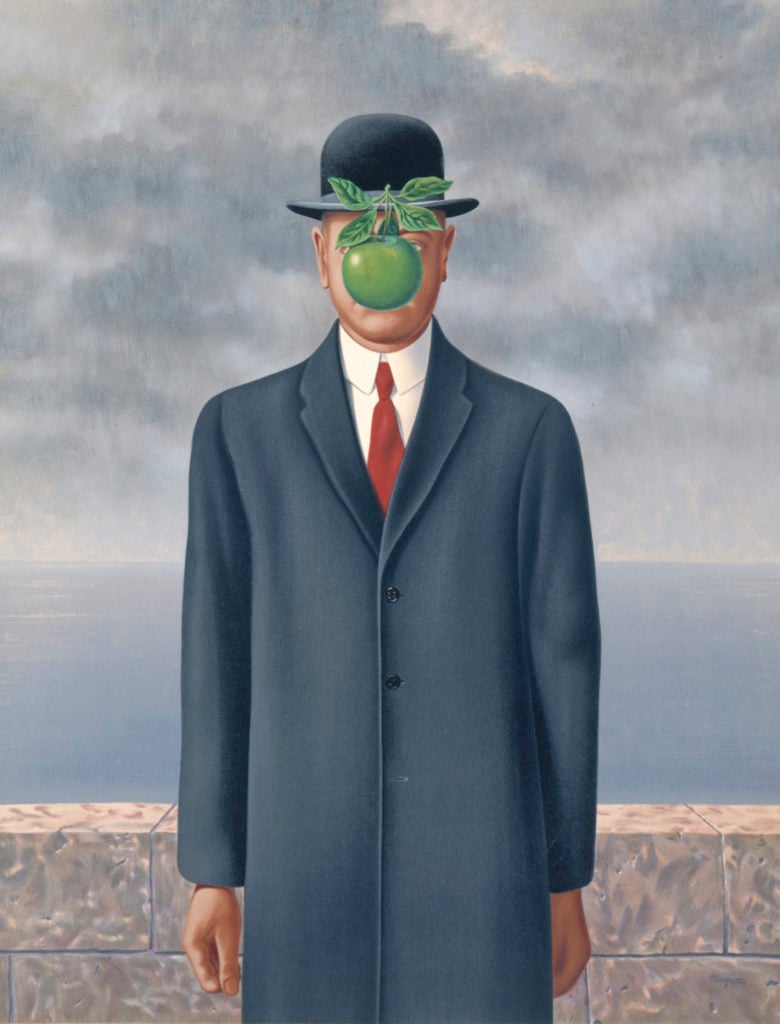
SFMOMA brings together more than 70 works in a revelatory exhibition that traces the final 25 years of Magritte's life.

Caroline Goldstein

Even if you haven’t visited a museum in a few years, the odds are good that you’ve come across one of René Magritte’s conceptually winking artworks recently. They pop up everywhere, from dorm-room posters to mugs to tote bags. But a new show at the San Francisco Museum of Modern Art puts forth a more nuanced version of the Surrealist artist, seeking to flesh out the arc of his career beyond that notorious painting of a pipe that isn’t a pipe.
In “René Magritte: The Fifth Season,” curators bring together more than 70 artworks for the first exhibition to look exclusively at the last quarter-century of the artist’s life and career. Between the 1940s and the ’60s, Magritte pivoted away from his characteristic style, divesting himself of the placid colors and clean lines of his unsettlingly banal paintings. Instead, he veered into the loose brushstrokes of Impressionism.
The garish colors of the aptly-titled painting Seasickness and the show’s eponymous The Fifth Season, both created in the late ’40s, might seem like a thankfully short-lived experiment for an artist grappling with personal and professional troubles—both of which plagued Magritte during the period. However, as is often the case with the artist, there is a chasm between what we see and what we are meant to understand.
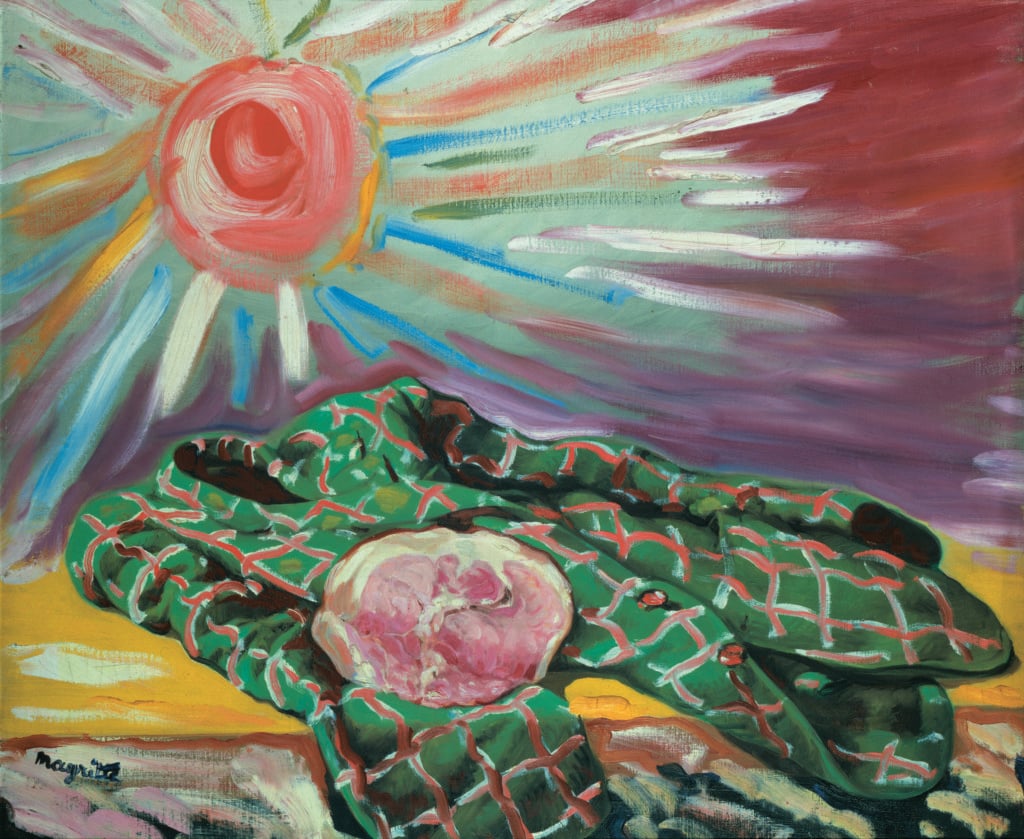
René Magritte’s Seasickness (1948). © Charly Herscovici, Brussels/Artists Rights Society (ARS), New York.
At a time when Nazis were summarily erasing “degenerate” Modern art from the visual landscape, the artist said, in a quote reproduced in the show’s catalogue, “I am not very inclined… to show ‘the pipe,’ which might be used as a pretext for shutting me up in a lunatic asylum.” The show argues that Magritte purposefully changed his style to avoid political persecution.
For those who want to burrow deeper into the vibrant mind and strange imagination of the artist, the show also includes plenty of faceless men in bowler hats, disquieting landscapes of domestic unease, and other aberrations of reality that Magritte does so well.
Below, take a look at a selection of works in SFMOMA’s show. It’s Magritte—just not always as you knew him.
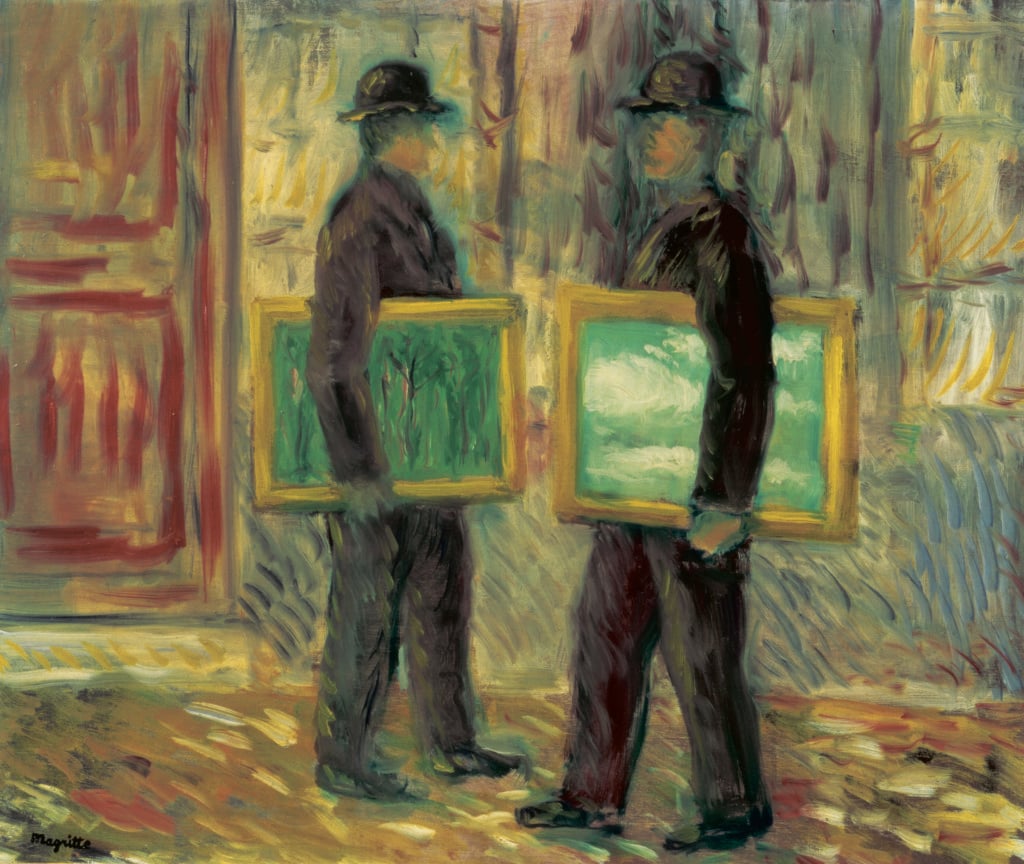
René Magritte’s The Fifth Season (1943). Musées Royaux des Beaux-Arts de Belgique; © Charly Herscovici, Brussels/Artists Rights Society (ARS), New York.
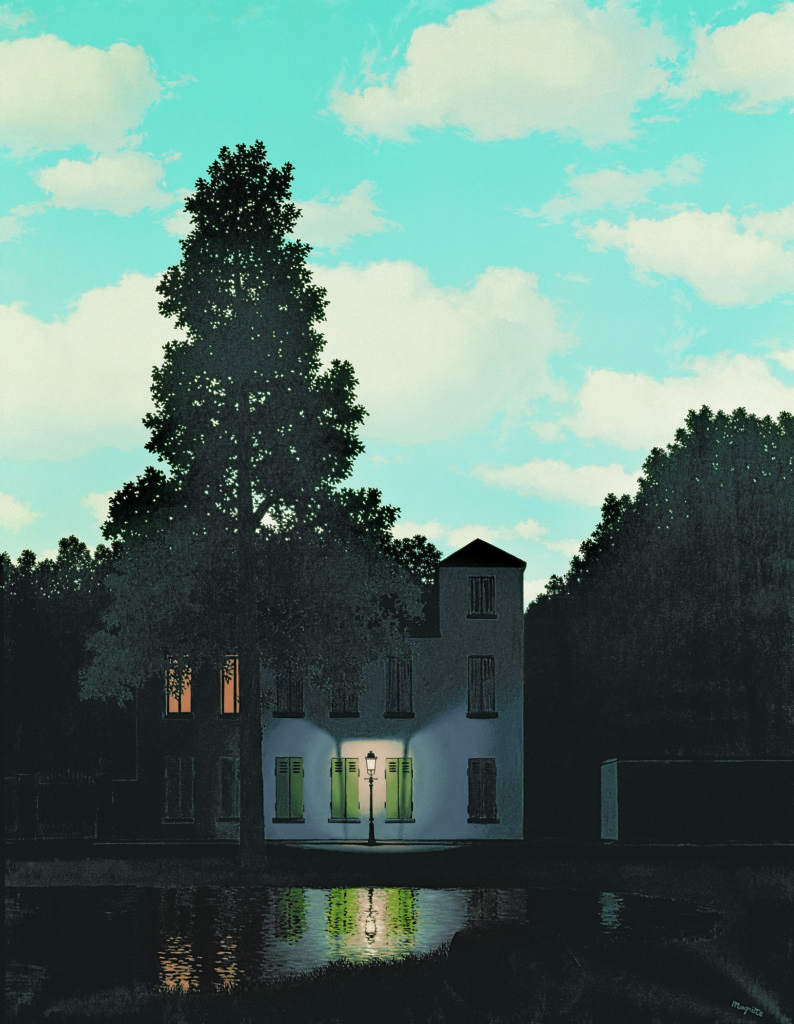
René Magritte’s The Dominion of Light (1954). Musées Royaux des Beaux-Arts de Belgique; © Charly Herscovici, Brussels/Artists Rights Society (ARS), New York.
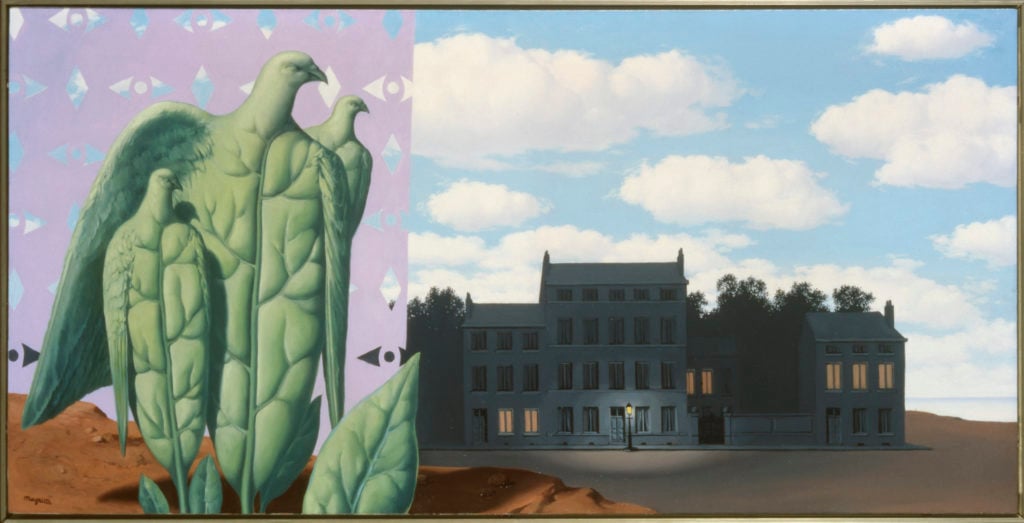
René Magritte’s The Enchanted Domain I (1953). Würth Collection, Künzelsau,Germany; © Charly Herscovici, Brussels / Artists Rights Society (ARS), New York.
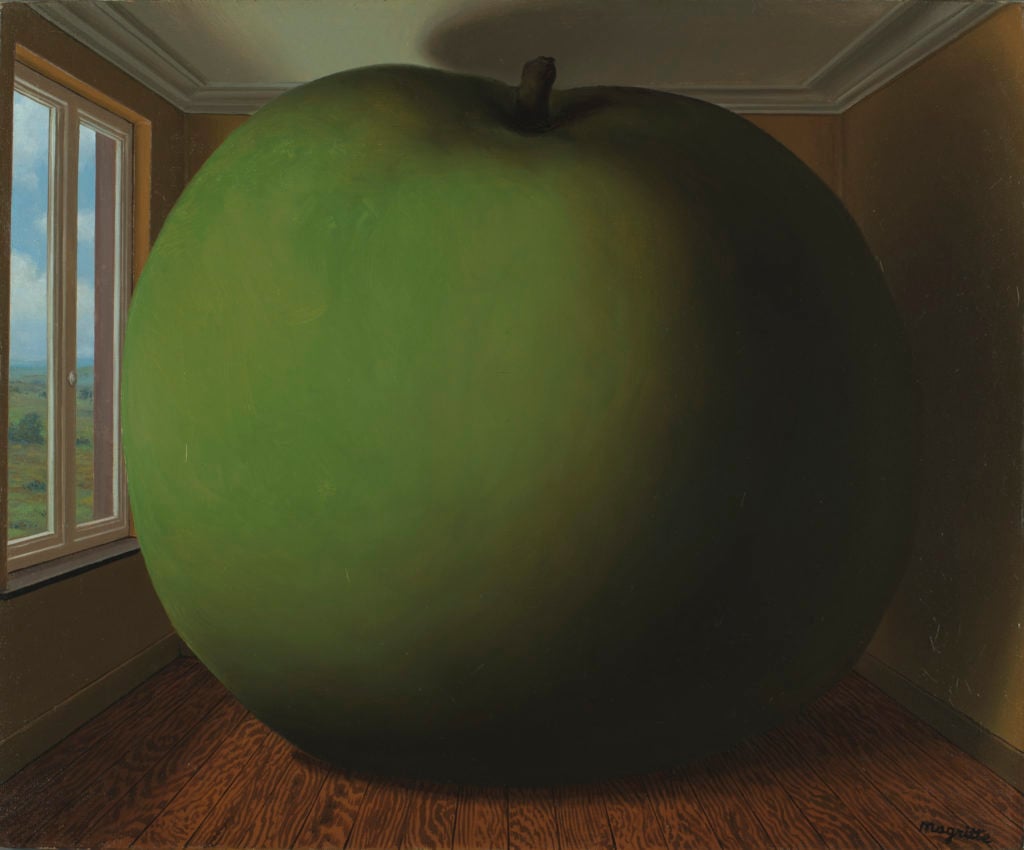
René Magritte’s The Listening Room (1952). The Menil Collection, Houston. ©Charly Herscovici, Brussels/Artists Rights Society (ARS), NY.
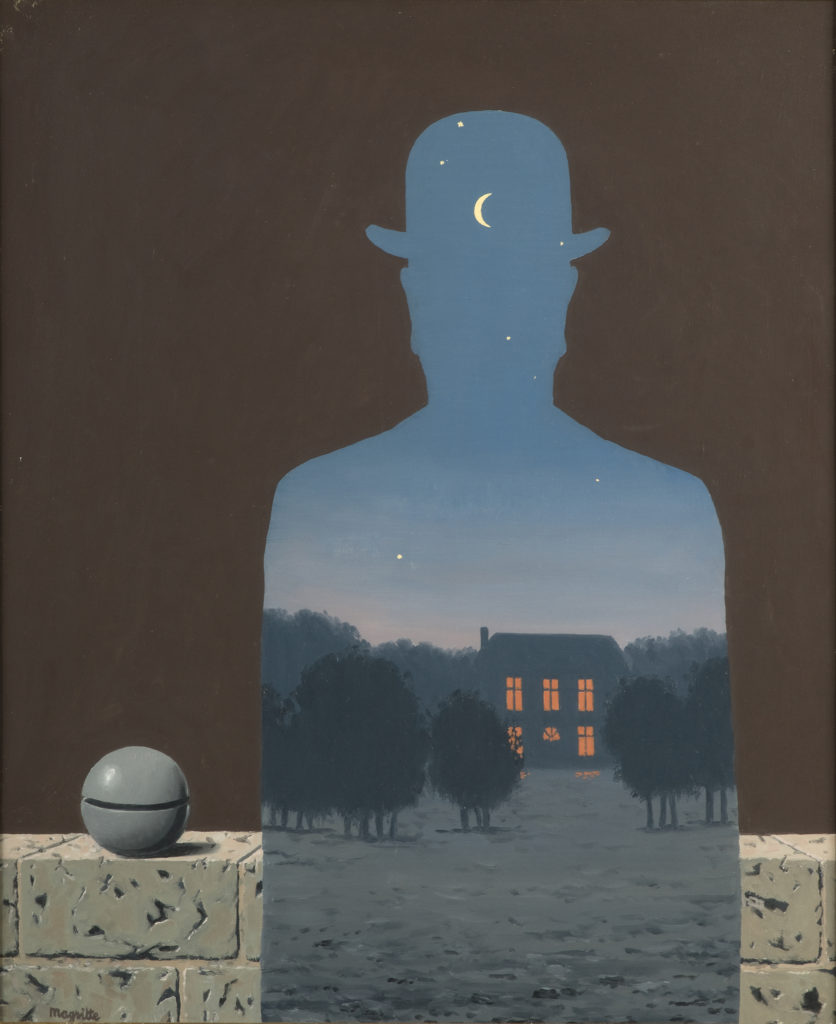
René Magritte’s The Happy Donor (1966). Musée d’Ixelles, Brussels; ©Charly Herscovici, Brussels/Artists Rights Society (ARS), NY.
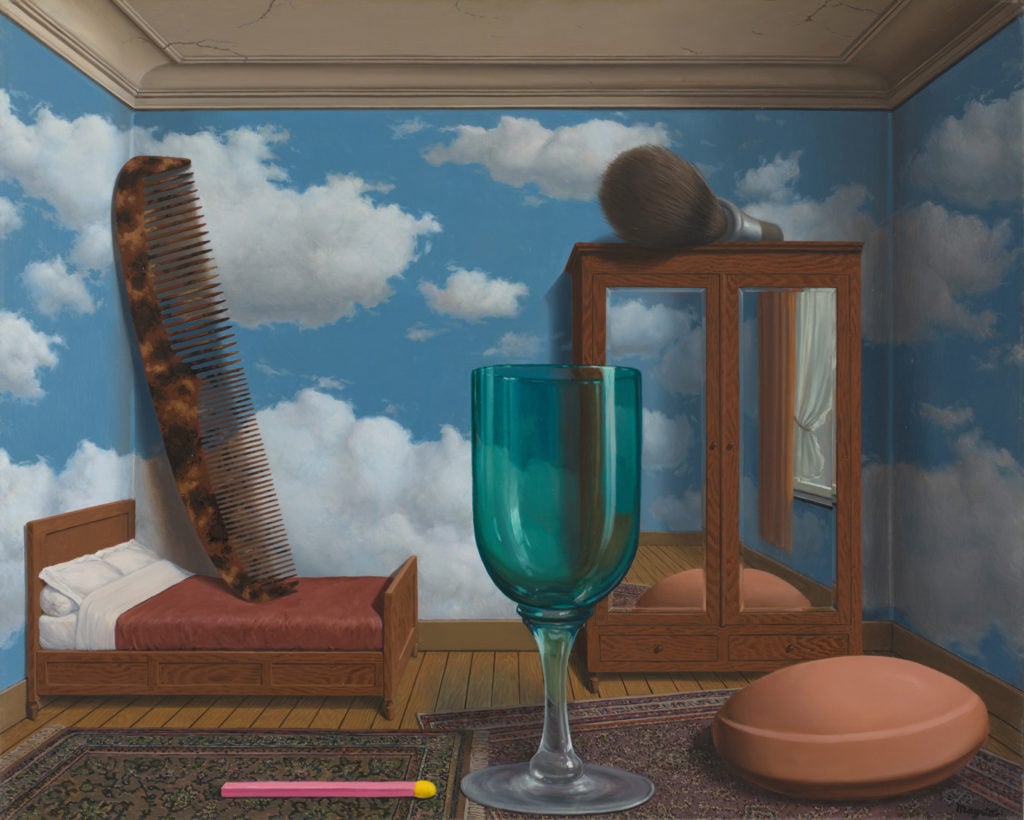
René Magritte’s Personal Values (1952). San Francisco Museum of Modern Art,© Charly Herscovici, Brussels / Artists Rights Society (ARS), New York.
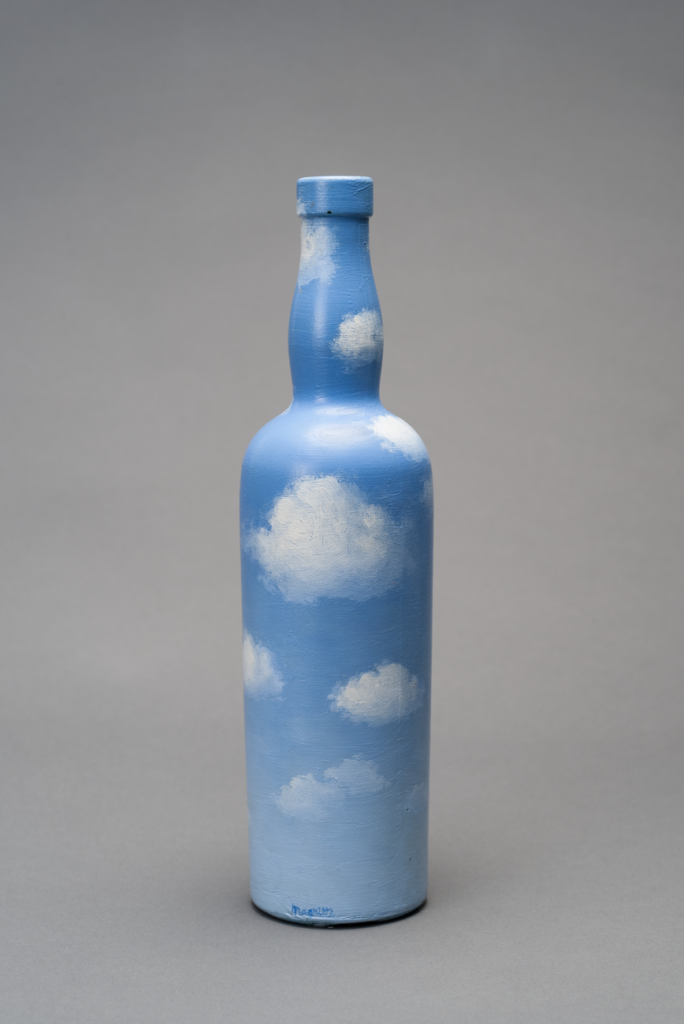
René Magritte’s La Courbure de l’univers (The Curvature of the Universe) (1950). The Menil Collection, © Charly Herscovici, Brussels/Artists Rights Society (ARS), NY. Photo: Paul Hester.
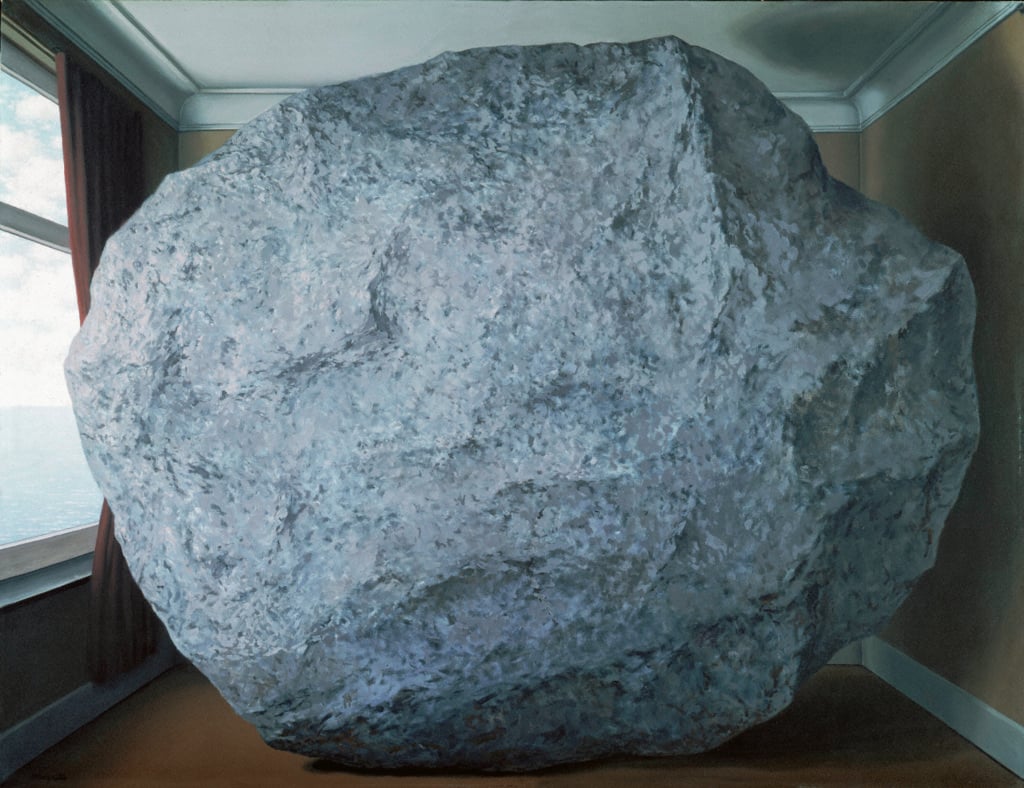
René Magritte’s L’anniversaire (1959). Toronto, Art Gallery of Ontario. © Charly Herscovici, Brussels / Artists Rights Society (ARS), New York.
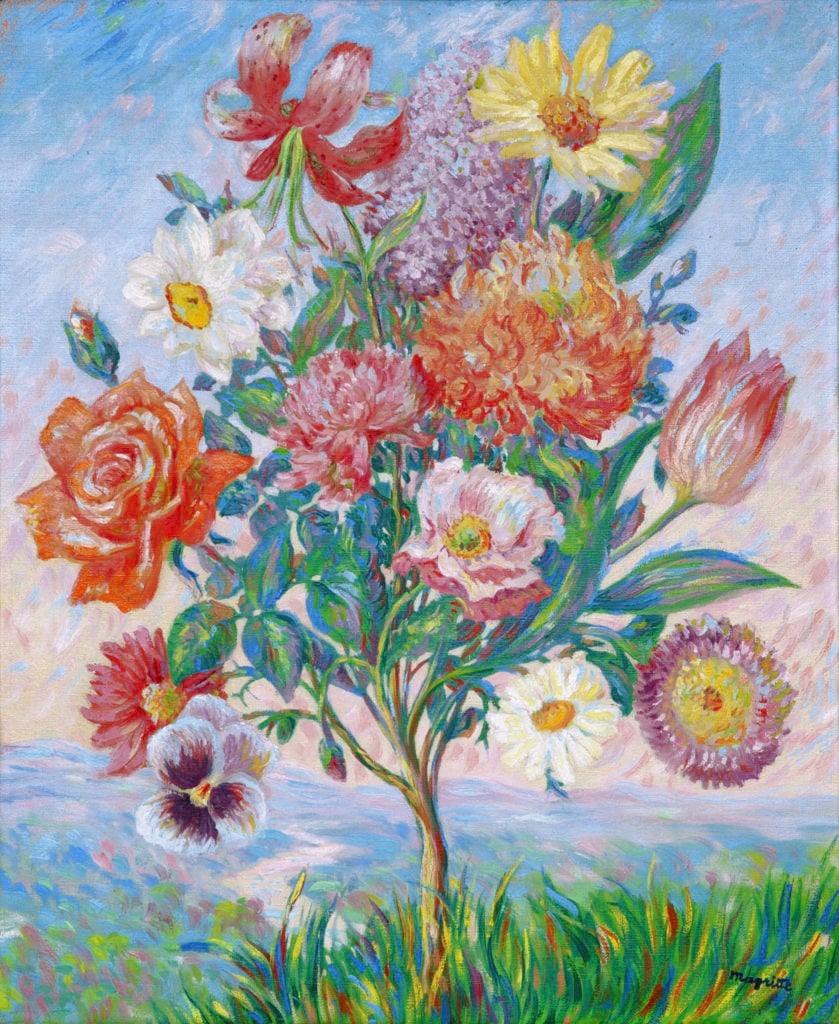
René Magritte’s Forethought (1943). Koons Collection, © Charly Herscovici, Brussels/Artists Rights Society (ARS), New York.
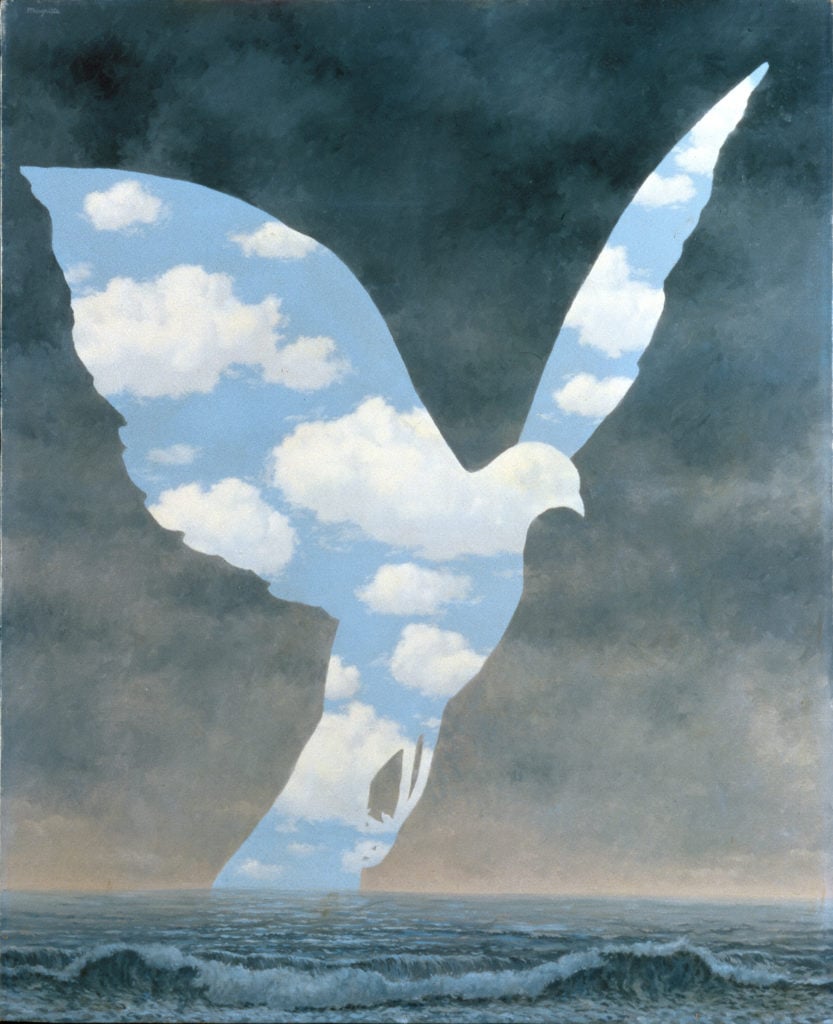
René Magritte’s La Grande Famille (1963) © Photothèque R. Magritte-ADAGP; Paris 2003.
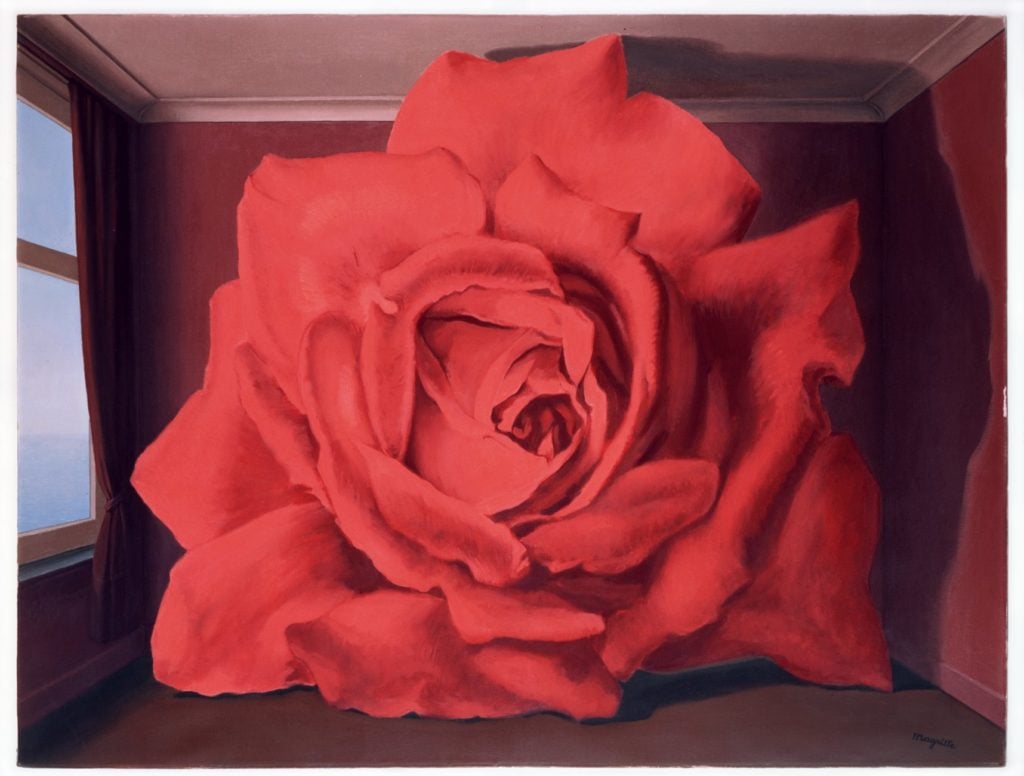
René Magritte’s Le tombeau des lutteurs (The Tomb of the Wrestlers) (1960). © Charly Herscovici, Brussels/Artist Rights Society (ARS) NY.
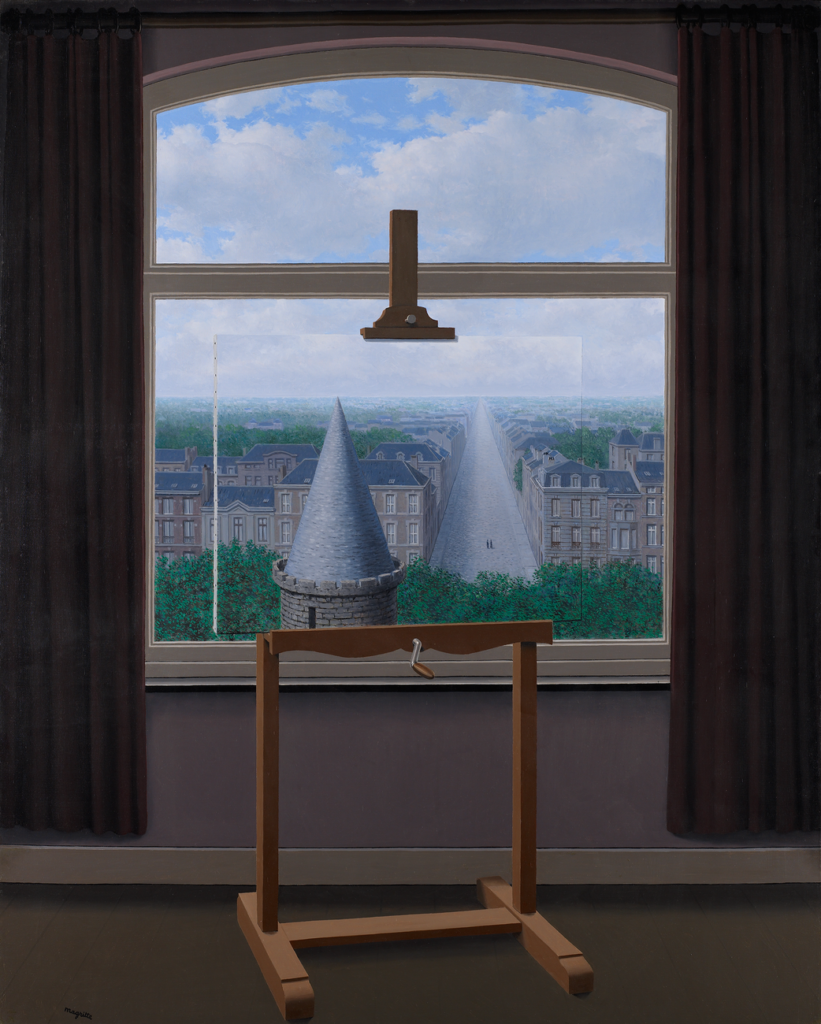
René Magritte’s Les promenades d’Euclide (Wher Euclid Walked) (1955). © Charly Herscovici, Brussels/Artists Rights Society (ARS), NY. Photo: Minneapolis Institute of Art.
“René Magritte: The Fifth Season” is on view at the San Francisco Museum of Modern Art through October 28.